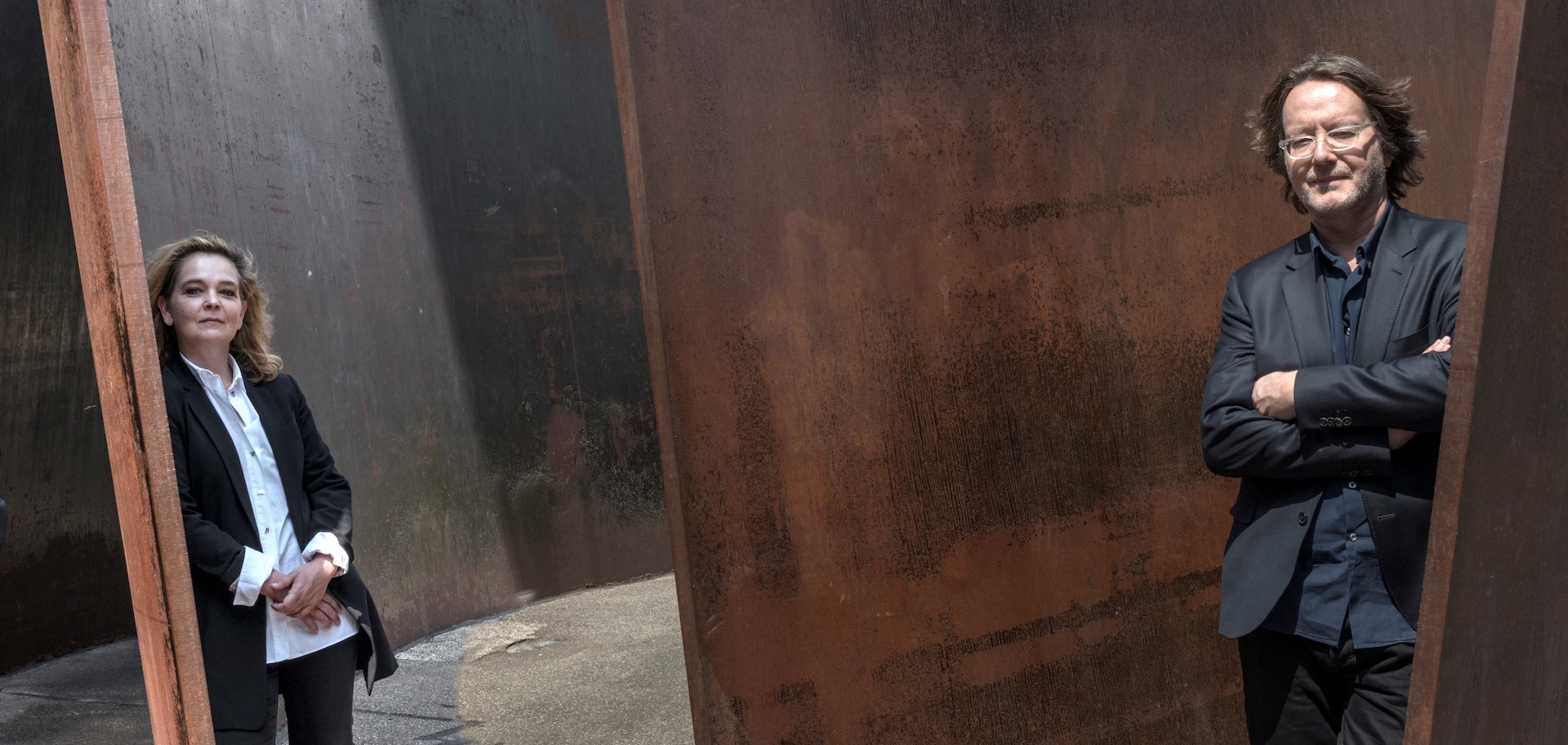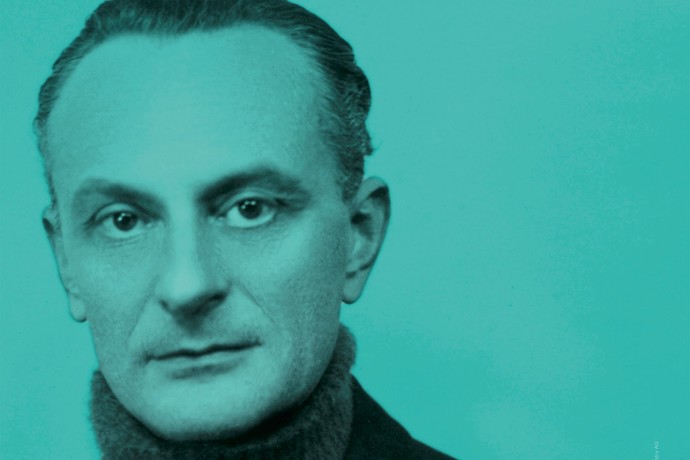Ivan Wyschnegradsky, l'éternel étranger
Day 1
Pionier der Mikrotöne

Nathalie Forget: Ondes Martenot
Susanne Huber, Tamriko Kordzaia, Stefka Perifanova, André Thomet, Ludovic Van Hellemont, Kirill Zvegintsov: Klaviere
Presentations, introductions, discussions, contemporaries with Barbara Barthelmes, Roman Brotbeck, Pascale Criton, Martine Joste, Charles Armikhanian, Anda Kryeziu, Eleni Ralli, Elnaz Seyedi
Special Guest: Paul Auster

The piano duo huber/thomet presents a two-day festival with guests from within and outside of Switzerland around the musical and visual work of Ivan Wyschnegradsky (1893-1979), the Russian-French pioneer of microtones.
Concerts, image projections, lectures, and conversations with contemporary witnesses enable diverse encounters with the sound, space, and color universe of the long misjudged artist.
An unusual set of instruments – eight concert grand pianos tuned in quarter, sixth and twelfth notes to each other, the Carillo piano tuned in sixteenth notes and the Ondes Martenot – brings unexpected worlds of sound to life. Contemporary compositions and world premieres by the young generation of female composers reflect its impact right up to the present day.
Ivan Wyschnegradsky – a materialistic mystic, sound utopian and misunderstood stranger. Above all, Vyshnegradsky is one of the most important Russian composers of the 20th century. He experimented with various microtone systems, searched for connections of colors and tones, and developed a system of two to six ‘communicating pianos’ for the performance of his works.
His music-historical significance was only recognized towards the end of the 20th century. While the post-war avant-garde was still playing with twelve-tone building blocks, he designed music-spatial concepts with which he could structurally connect the audible and inaudible world. This is still highly topical.
The festival demonstrates this topicality with performances of Vyshnegradsky’s major works, with commissions to three young female composers from Greece, Kosovo and Iran, and with works from Vyshnegradsky’s environment.
In addition, there will be commentaries, lectures and conversations with people who still met Wyschnegradsky in Paris.
The Wyschnegradsky Festival gives a comprehensive overview of his rich oeuvre in four concerts: From the late romantic early works to the fascinatingly abstract late works. His neoclassical experiments will also be heard. Works by other composers will be inserted into each of the four concerts, further expanding the spectrum of microtones.
Ali Baba conjures up culinary colors and accompanies the musical night with a three-course Oriental-Mediterranean menu. The meal with vegetarian and meat delicacies can be booked in advance as well as the brunch for the Sunday program.
4:00
Apéro
Festival opening
4:30
Pansonore rooms
Presentation by Roman Brotbeck
Ivan Wyschnegradsky’s importance in the music history of the 20th century
Roman Brotbeck has researched microtonal pioneers in Mexico, Canada, France, USA, USSR from 1988-1993. From 2018-2021 he led a research project on non-equidistant microtonal music at the Bern University of the Arts.
5:00
Concert 1: Prélude
The first concert shows how contrasting microintervals can sound: 13-tone quarter-tone preludes à la Scriabin, transparent sound pictures à la Mondrian, beguilingly illuminated by the Ondes Martenot. Greek composer Eleni Ralli creates a glittering, luminous twelfth-tone sculpture with six pianos, ending in a ravishingly chaotic fireworks display.
Ivan Wyschnegradsky: selection from 24 Préludes op. 22b (1934, rev. 1960-70) for two pianos in quarter-tone intervals
Ivan Wyschnegradsky: Transparence I op. 35 (1953) for ondes martenot and two pianos in quarter-tone pitch
Eleni Ralli (*1984): Time perceptions for six pianos at twelfth-note intervals (2021), UA
From 5:50
Ali Baba’s Appetizers
6:15
Colors
Presentation by Barbara Barthelmes
Berlin-based musicologist Barbara Barthelmes will speak about Ivan Wyschnegradsky’s color-sound experiments. Barbara Barthelmes conducted intensive studies on Wyschnegradsky’s project of a color dome in Paris in the early 1990s and was the first to present a comprehensive Wyschnegradksy monograph.
7:00
Concert 2: polychrom
The Kosovar composer and multimedia artist follows Wyschnegradsky’s footsteps and transforms microintervals into colors. Georg Friedrich Haas, the molecular chef among the microtonal composers, organizes a ghost ride on the table piano of the Mexican futurist Julián Carrillo, which spans only one octave, and Wyschnegradsky can be heard once in a Stravinsky mask; at the end, however, he takes us into a cosmic space spiral.
Anda Kryeziu (*1993): POLYCHROM #1 for two pianos in different tunings, electronics and video (2022), UA
Ivan Wyschneradsky: Troisième fragment symphonique for two times two pianos in quarter tone intervals, op. 31 (1947, rev. 1964)
Georg Friedrich Haas (*1953): flow and friction – small study for sixteenth-note piano four hands (2001)
Ivan Wyschnegradsky: Etude sur les mouvements rotatoires op. 45a (1961, rev. 1963) fFor two pianos in quarter-tone intervals of eight hands
From 7:50
Ali Baba’s main courses
8:30
Mémoires – Memories of Ivan Vyshnegradsky
Podium
43 years ago Ivan Wyschnegradsky died impoverished, lonely, even suffering from hunger in Paris. The festival found quite a few people who still visited the old composer on Rue Croix Nivert. He lived there after being kicked out of 99 Rue Mademoiselle, where he had lived for 50 years.
Contemporary witnesses are the composer Pascale Criton, who had still taken lessons with Wyschnegradsky, the French pianist Martine Joste, who has championed Wyschnegradsky’s works for over 50 years, the American composer and sound poet Charles Amirkhanian and, indirectly, Wyschnegradsky’s friend Claude Ballif, who died in 2004, whose memories of Wyschnegradsky are recounted by Barbara Barthelmes.
9:30
Concert 3: Arc-en-Ciel
This concert features Vyshnegradsky’s late works, in which he brought his system of non-octave tonal spaces to perfection. His pansonor laws of fullness, intensity and fluidity become sound reality. It is a floating, circling world, free of consonances and dissonances, free also of subjective schmonzes, rather a space travel through distant and for our hearing partly unreachable cosmic worlds. Finally, an energetic walk through twelfth-toned Sequoia woods by Swiss microtonal specialist Edu Haubensak.
Ivan Wyschnegradsky: Arc-en-ciel I op. 37 (1956) for six pianos at twelfth-note intervals
Ivan Wyschnegradsky: Dialogue à trois op. 30 (1945) for three pianos at sixth-note intervals
Ivan Wyschnegradsky: Arc-en-ciel II op. 52a (1956-1958) for six pianos in twelfth-note intervals, (fragment)
Edu Haubensak (*1954): Sequoia for six pianos at twelfth-note intervals (2019)
Ivan Wyschnegradsky: I.W.: Transparence II op. 47 (1962-1963) for ondes martenot and two pianos in quarter-tone pitch
Nocturne
Reading and discussion
The American author Paul Auster is the first writer who has also treated Wyschnegradsky in literary form: In “The Locked Room” from the New York Trilogy, he tells of his encounters with the composer and his refrigerator problems.
Switching from New York directly to the concert hall, he reads the relevant passages and tells of his memories and his friendship with Wyschnegradsky.
From 10:50
Ali Baba’s dessert
Credits
Dank an:
Projektförderer: Dampfzentrale Bern, Impuls Neue Musik, Pro Helvetia, Kultur Stadt Bern, Swisslos Culture Canton de Berne, Burgergemeinde Bern, Ernst Göhner Stiftung, Migros Kulturprozent, SIS, GVB Kulturstiftung,
Kooperationspartner: Dampfzentrale Bern, Paul Sacher Stiftung, Association Wyschnegradsky Paris,
Urs Bachmann, Gebr. Bachmann Tasteninstrumente AG
Medienpartnerschaft: Der Bund
Das 1/16-Ton-Klavier wird freundlicherweise von der Hochschule der Künste Bern zur Verfügung gestellt.
Ruth Gilgen: Presse, Organisation
Marie Louise Suter: Grafik
Roman Brotbeck: Texte
Foto huber/thomet: Ute Schendel
Foto von Wyschnegradskys Ton- und Farbsystem © Paul Sacher Stiftung Basel
